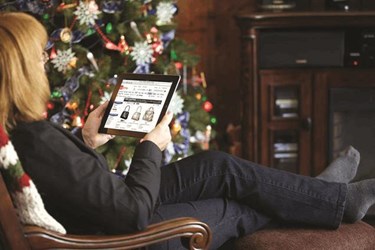Online Shopping Could Reach Record Heights This Holiday Season

By Christine Kern, contributing writer

Retailers need to cater to the digital mindset in order to capitalize on sales.
Deloitte released its 31st annual holiday survey of consumer spending intentions and trends, which finds more consumers than ever before (50 percent) plan to shop online for gifts. The survey of more than 5,000 U.S. consumers also found that respondents plan to spend 47 percent of their budgets online, matching what they plan to spend in brick-and-mortar stores for the first time ever.
And two-thirds of respondents (66 percent) said that they plan to engage in “webrooming,” researching items online before purchasing them in-store. On the other hand, 50 percent of shoppers said they will engage in “showrooming,” going to a brick-and-mortar store to look for an item before searching online for the best price and making purchases there.
This year’s shopper plans to buy an average of 14 gifts, with an average spending limit of $426. And significantly, 27 percent of respondents said that the U.S. presidential election will impact their spending, according to the infographic.
“The way people shop online is having a profound impact on holiday spending this year,” said Rod Sides, vice chairman, Deloitte LLP and U.S. retail, wholesale and distribution practice leader. “Retailers must cater to that digital mindset long before someone walks into a store. If retailers treat online and in-store shopping as mutually reinforcing rather than competitive forces, they can create more opportunities across the business. Customer expectations are being shaped as much by the digital experience as the in-store experience. As a result, retailers should map digital features that matter to the consumer to their brand.”
The study also found that:
Steadying Finances Drive Stable Sales: Three-quarters (75 percent) of respondents indicate their household financial situation is the same or better than the prior year, up 17 percentage points from 58 percent five years ago.
In-store crowds may dwindle: The number of respondents who plan to visit standalone “big box” retail stores dropped from 63 percent to 59 percent this year. Traditional malls fell slightly from 53 percent to 50 percent, and independent stores not located in malls dropped four percentage points to 38 percent.
Consumers are putting others first when it comes to gifts: After four years of rising non-gift spending intentions, respondents are starting to rein in the amount they plan to put toward categories such as holiday travel and dining out, entertaining, non-gift clothing and home/holiday furnishings and decorations.
Mobile transactions gaining ground: Research still outpaces purchasing on smartphones, but 43 percent of smartphone owners expect to make a mobile purchase, up eight percentage points from 35 percent in 2015.
Sides added, "Retailers may also find that while consumers uphold the spirit of gift-giving, people may not feel the need to indulge on themselves as much this year. We saw a lot of replenishment in non-gift categories over the last few years, and that may be starting to cool off a bit. As people find lower costs for expenses such as travel, they may choose to hang on to those extra savings. Several years of extended and highly competitive holiday promotions among retailers have also reinforced consumers' expectations that they don't have to pay full price."
